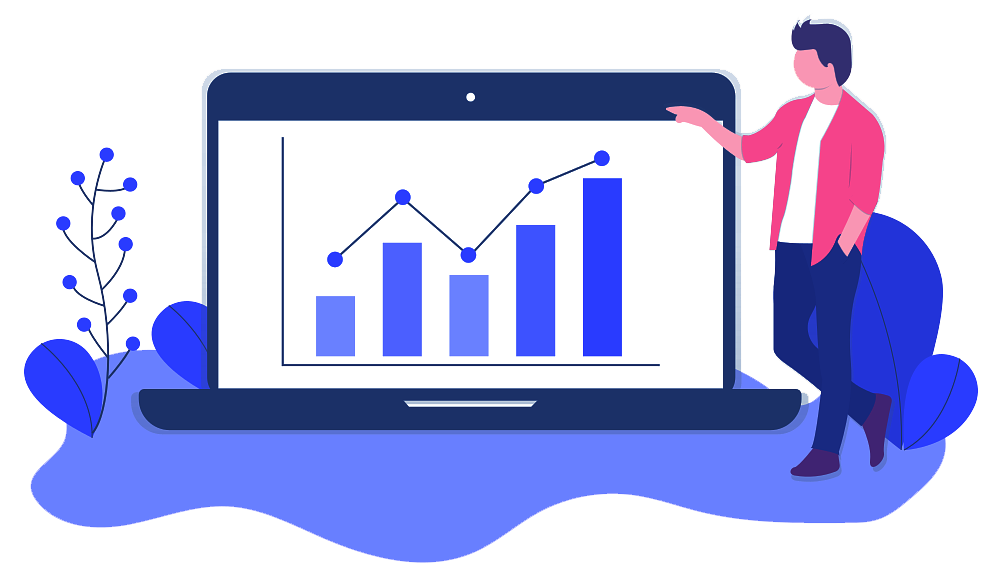AI vs. Business Intelligence Application Scenarios
When considering Artificial Intelligence (AI) and Business Intelligence (BI) in an enterprise context, it’s important to understand that both AI and BI have crucial, and sometimes intersecting, enterprise applications.
Put simply, AI looks into the use of computer systems to effectively mimic human intelligence, such as judgement, learning, and problem-solving. Similarly, businesses are now seeing massive potential in AI for decision-making, speech recognition, and much more.
Business Intelligence software, however, pertains to the use of myriad technologies and tools that gather and interpret business data. Businesses primarily use BI to aid better, more informed decision-making. In fact, BI enables businesses to make decisions 5x faster than they normally would.
AI vs. BI application scenarios
While BI can help businesses make better decisions faster, it still relies on humans to ultimately make those decisions based on collected data. Alternatively, AI can enable computers to make operational decisions themselves. For instance, AI-powered chatbots can answer customer questions without any human intervention. Not only can they provide people with instructions and recommendations, but they can also act on them autonomously.
AI enterprise application scenarios
According to an article by the Harvard Business Review, AI can support three important business requirements:
- Automating business processes
- Gaining insight through data analysis
- Engaging with customers and employees
AI-powered enterprise applications can be further broken down into three categories:
- Process automation
- Cognitive insight
- Cognitive engagement
Process automation
Robotic Process Automation (RPA) is the most common and arguably most valuable type of AI-powered enterprise application. RPA is more advanced than previous business-process automation tools because it involves the use of robots to process and consume information from multiple IT systems.
Such applications can automatically update customer records and information, and offer basic instruction for standardised documentation and contracts. According to the Harvard Business Review, these applications, often replacing administrative and human back-office functions, frequently come with a high return on investment.
Cognitive insight
Cognitive insight applications use algorithms to detect patterns in extensive quantities of data and interpret their meaning. These applications can learn and improve over time, as they continue to interact with users and data. Such applications can also:
- Predict customer behaviour
- Provide improved IT security solutions
- Conceive personalised ads
Cognitive engagement
Applications that involve cognitive engagement are used to network directly with customers and employees such as Natural Language Processing (NLP) chatbots. Chatbots can offer 24/7 customer service, product and service recommendations, internal sites for answering employee questions, and even health treatment recommendations.
BI enterprise application scenarios
Most businesses adopted business intelligence in 2020, yet many may not even realise that they rely on it. Business intelligence can be as simple as interacting with a Microsoft Excel spreadsheet. This is because spreadsheets, like BI, enable businesses to visualise their data by organising and analysing it with a significant increase in efficiency that otherwise wouldn’t be possible.
For businesses, the top three business intelligence trends are data visualisation, data quality management, and self-service business intelligence (BI).
In addition, many businesses use BI to better understand their customers and their needs. BI tools can gather data from disparate systems, such as email, social media, and chatbots, and present it in a clear, unified format. Through the collection and coalescence of data from these various touchpoints, businesses can gain a profound understanding of who their customers are and how to better serve them.
Companies also employ BI tools to enhance operational efficiency. With BI, businesses can track key performance indicators (KPIs) in real-time, empowering them to identify and solve problems before they arise.
Does Business Intelligence require Artificial Intelligence?
Although BI can help companies decipher and act on the large quantity of data they collect, dashboards and well-designed visualisations may not always be adequate.
AI can work with BI tools to generate intelligible, practical insights from the data they analyse. An integrated, AI-powered system can illuminate the importance of each data point on a highly detailed level, and help people understand how that data can render real business decisions. Through the synthesis of AI and BI, businesses can incorporate immense quantities of data into systematic plans of action.
AI can also help in the advancement of BI tools. As those tools collect more data, interact with more customers, and learn from the outcomes that their suggestions produce, they can self-adjust based on what types of recommendations and analyses are most useful.


